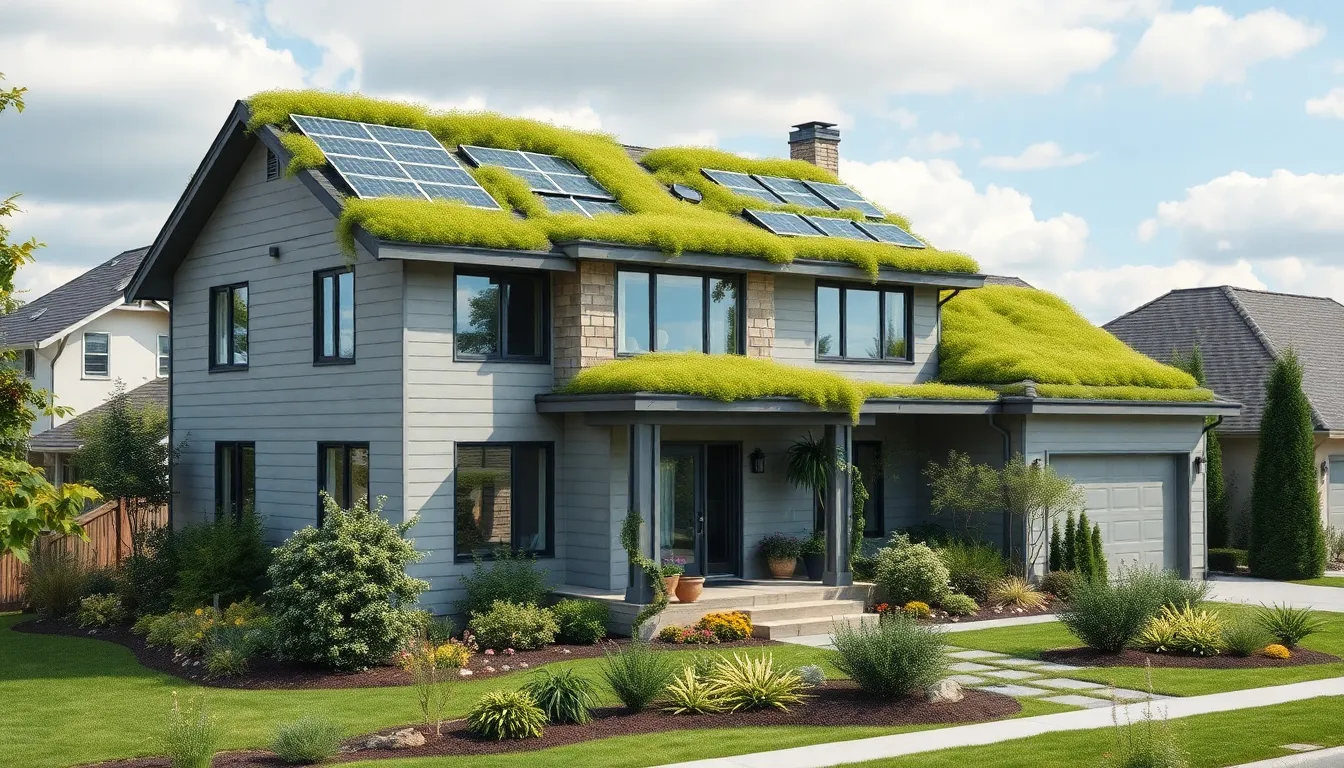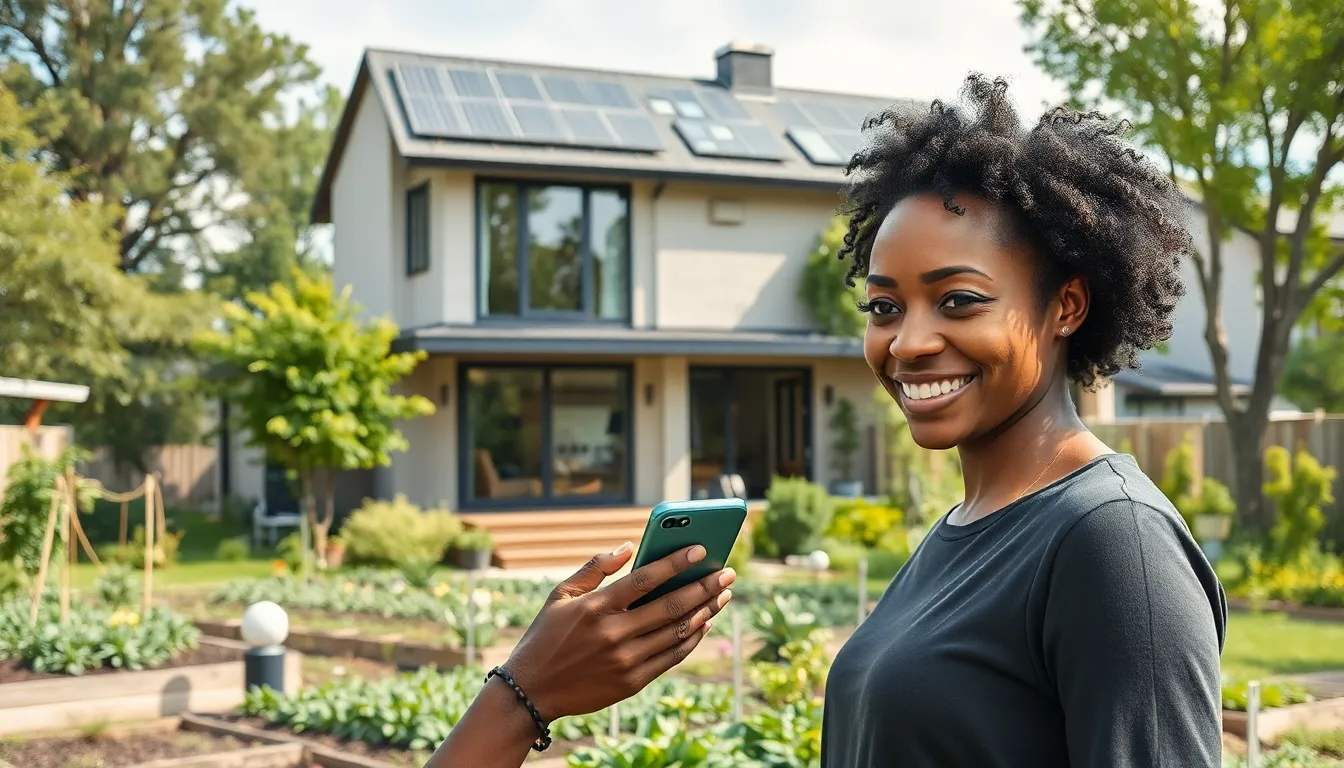As technology advances, the concept of home is evolving rapidly. Future homes promise to be more than just shelters; they’ll be smart, sustainable, and tailored to individual lifestyles. Imagine living in a space that adapts to your needs, optimizing energy usage while enhancing comfort and security.
The integration of artificial intelligence, renewable energy sources, and innovative building materials is transforming how we think about our living environments. These homes will not only prioritize efficiency but also foster a sense of community and connection. With the rise of urbanization and environmental concerns, the future of housing is set to redefine the way people live, work, and interact.
Table of Contents
ToggleOverview of Future Homes
Future homes represent a significant shift in how living spaces function and interact with residents. Smart technology integrates seamlessly with daily activities, allowing homes to learn and adapt to individual preferences. Homes equipped with artificial intelligence analyze patterns to enhance comfort and security.
Sustainability plays a crucial role in the design of future homes. Renewable energy sources, such as solar panels and wind turbines, provide clean power, reducing overall dependence on fossil fuels. Energy-efficient materials and systems promote reduced energy consumption, lowering utility costs and environmental impact.
Innovative construction techniques, such as 3D printing and modular designs, support quicker and more cost-effective building processes. These methods enable customization, allowing homeowners to create spaces tailored to their lifestyles.
Community-oriented designs foster connections among residents. Shared amenities, like community gardens and recreational spaces, encourage social interaction and promote a sense of belonging. Future homes prioritize not only individual comfort but also the wellbeing of the community.
By addressing urbanization and environmental challenges, future homes redefine modern living. The emphasis on smart technology, sustainability, and community will shape a new standard for housing, creating environments that enhance quality of life.
Key Features of Future Homes

Future homes prioritize sustainability and smart technology, creating environments that are efficient and user-centric. These features enhance daily living while addressing modern challenges.
Sustainable Design
Sustainable design incorporates energy-efficient materials, renewable energy sources, and efficient waste management systems. Homes utilize solar panels, wind turbines, and green roofs to harness natural resources, significantly lowering energy costs. Many future homes may include rainwater harvesting systems to conserve water usage. Innovative construction methods, such as 3D printing and modular design, facilitate rapid building while minimizing waste. By utilizing sustainably sourced materials, homes lower their carbon footprint and contribute to environmental preservation.
Smart Technology Integration
Smart technology integration enhances convenience and security in future homes. Homes equipped with AI-driven systems can monitor energy usage and optimize efficiency, adjusting heating and cooling automatically based on occupancy. Many residences may feature smart appliances that communicate with each other for improved functionality. Advanced security systems—such as surveillance cameras, smart locks, and alarms—provide real-time monitoring accessible via smartphones. Residents benefit from personalized settings tailored to enhance their living experience, significantly transforming daily routines.
Benefits of Future Homes
Future homes present numerous advantages, particularly in energy efficiency and enhanced comfort. These benefits contribute significantly to the overall quality of life for residents.
Energy Efficiency
Energy efficiency in future homes incorporates advanced technologies that minimize energy consumption. Smart energy management systems monitor usage patterns, adjusting energy flow based on real-time needs. Features like LED lighting, high-performance insulation, and energy-efficient appliances work together to significantly reduce utility costs. Homes equipped with renewable energy sources, such as solar panels and wind turbines, not only lower dependence on fossil fuels but also provide residents with clean energy options. Additionally, implemented technologies, like rainwater harvesting systems and graywater reuse, further enhance resource efficiency and sustainability.
Enhanced Comfort and Convenience
Enhanced comfort and convenience in future homes stem from the integration of smart technology. Automated systems adjust lighting, temperature, and security settings based on individual preferences, promoting a personalized living experience. Smart home devices enable residents to control various aspects of their environment remotely, which fosters ease and connectivity. Moreover, automated maintenance reminders and fault detection systems streamline home management tasks, ensuring that issues are addressed promptly. Designs prioritizing open spaces and natural light contribute to overall well-being, creating environments that support relaxation and productivity.
Challenges in Implementing Future Homes
Future homes face several challenges that can hinder their widespread adoption, primarily in the areas of implementation costs and technological limitations.
High Implementation Costs
High implementation costs present a significant barrier to the development of future homes. Advanced technologies, such as smart systems and renewable energy sources, often involve substantial upfront investments. According to a report by the International Energy Agency, integrating solar panels can increase initial construction costs by 20-30%. Additionally, innovative materials and construction techniques, like 3D printing, require specific expertise and equipment, further adding to expenses. Budget constraints can limit developers and homeowners from adopting these efficient options, delaying the transition to sustainable living environments.
Technological Limitations
Technological limitations also impede the adoption of future homes. While advancements in artificial intelligence and smart technology have made significant strides, issues like interoperability between devices remain prevalent. The lack of standardization among various smart home products can lead to compatibility issues, complicating user experience. Additionally, reliance on high-speed internet connectivity poses challenges in rural or underserved areas, where access may be unreliable. As technology evolves, ensuring consistent performance and integration becomes essential for maximizing the effectiveness of smart home systems.
Future homes are set to revolutionize the way people live. With a focus on sustainability and smart technology, these innovative spaces will not only enhance comfort but also promote energy efficiency. As communities evolve, the integration of renewable energy sources and advanced materials will play a pivotal role in shaping living environments.
While challenges exist in implementation costs and technological limitations, the potential benefits far outweigh the hurdles. By embracing these advancements, future homes will foster a sense of belonging and improve overall quality of life. The journey toward these transformative living spaces is just beginning, and the possibilities are truly exciting.



